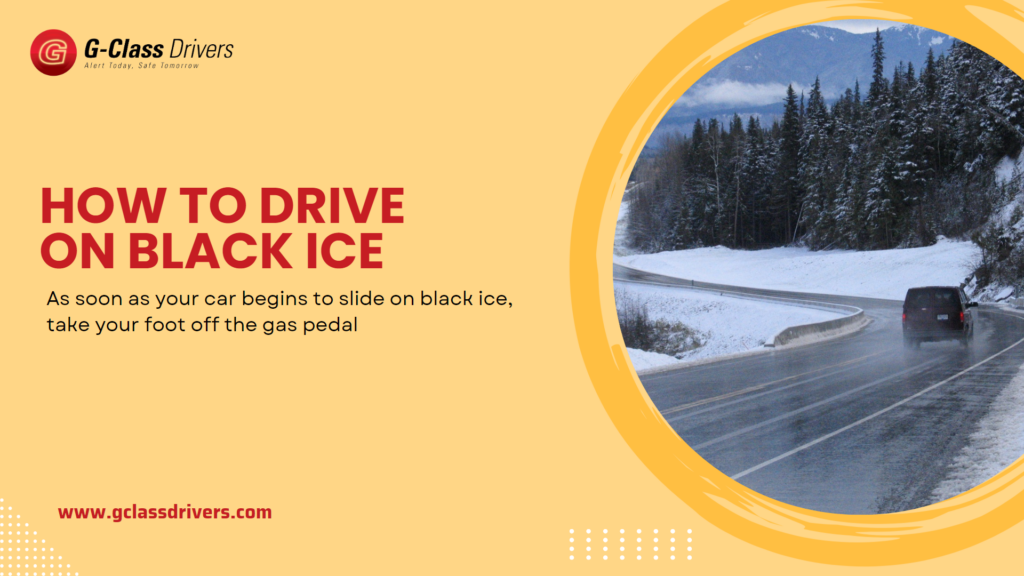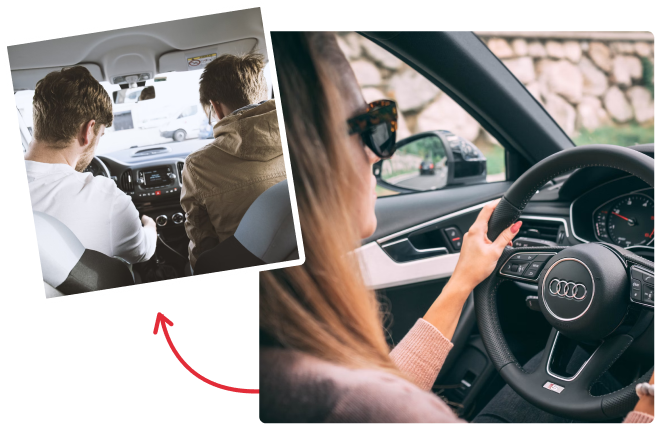Realizing you are going to hit black ice is terrifying. While unable to detect black ice, the loss of control makes it more hazardous. Knowing how to drive on black ice is the key to avoiding an accident. Your better understanding of black ice will help you avoid accidents in the future. Let’s figure out what black ice is, how to detect it, and how to drive on black ice to restrict road accidents.
What is black ice?
The term black ice does not mean the ice is black in color. Black ice is a thin, transparent film of ice covering the road. It looks black on the road since it is transparent, and what you see is pavement underneath. It is so thin at this level that even humans can’t easily observe it. Make sure you focus on keeping your eyes on the roads and surroundings.
Black ice mostly occurs in areas or roads where sunlight is not too much. But there is a question: when does it occur, or what causes black ice? So the answer to these questions is:
- It frequently happens when the air temperature is higher than the road temperature.
- Because of this difference, liquid moisture in the air freezes when it comes into contact with the road.
- Rapid temperature drops also generate black ice because the water on the road hasn’t had time to evaporate before freezing.
Why is Black Ice Dangerous?
Black ice is dangerous due to its transparency and causes road accidents. That’s why knowledge of how to drive on black ice is the most essential factor in reducing accidents due to black ice. Following are the key points due to which black ice is considered a threat.
Hard to observe
- What makes black ice dangerous is that it is challenging to see.
- As it is attached to roads seamlessly, it isn’t easy to drive on highways and spot the black ice on the roads.
Skidding
- When driving, turning, or braking on patches of back ice, vehicles can quickly lose traction and go into a skid.
- Skidding due to black ice is a significant cause of traffic accidents during winter driving. That’s why knowledge of how to drive on black ice is the most essential factor in reducing accidents due to black ice.
Tips for how to drive on black ice
Here are some safety tips for driving on black ice:
Be conscious
While driving in black ice conditions, always watch for dark spots a few feet ahead. Drive with extra caution through shady areas, bridges, and overpasses.
Avoid black ice areas
The simplest way to avoid a black ice disaster is to avoid driving in regions that are prone to black ice altogether. Take a moment before you go to check the current weather conditions and the forecast for your trip.
Drive straight
Try to drive as straight as possible without making any sharp curves. Make only modest steering adjustments when necessary; this will help you drive in a better way.
Map out the right route
Consider mapping out your route to avoid locations with a high risk of black ice. This comprises roads with tunnels, dense foliage, bridges, and highway overpasses.
Avoid Using cruise control
Avoid using cruise control during the winter or in icy situations. When black ice is on the road, you must completely control your vehicle.
Be prepared for the worst.
The best way to prepare for the worst is to travel with your necessary things. You could be trapped on the side of the road for hours. So having a blanket, ice scraper, de-icer, torch, and first-aid supplies are necessary.
Get your vehicle ready
Make sure your tires are correctly inflated and have sufficient tread. Winter tires may be a useful investment, particularly in colder climates. Your vehicle should not have any problems that would cause further inconvenience.
Maintain distance from other vehicles
Maintaining a safe distance between yourself and the car before you is a valuable safety precaution. It will take you longer to come to a safe stop; expertise in how to drive on black ice is essential. So be sure there is plenty of space between you and the car in front of you.
Stay calm
As stressful as driving with black ice on the road can be, being calm behind the wheel is essential. The more relaxed you are, the more likely you are to recall and apply some of these suggestions. For example, encountering ice on the road may cause you to panic.
Tips for avoiding black ice
Following are some tips to avoid black ice during your travels. To stay safe on the road, ensure you know how to drive on black ice.
Note temperature
A temperature of roughly 32°F combined with moist pavements is excellent for producing black ice.
Avoid shaded areas
Black ice is hazardous in heavily shaded areas or near the bottom of hills. Even a tiny patch of black ice may cause danger.
Prevent bridges and overpasses
Avoid bridges and overpasses because, with the increased airflow, bridges and overpasses will cool faster, facilitating the formation of black ice.
Drive on high-traffic roads
High-traffic roads have fewer odds of producing black ice than low-traffic areas, such as rural or suburban highways.
When you Lose Control on Black Ice
Following are the measures to be taken when you hit black ice and do not know how to drive on black ice:
Do not slam on the brakes.
Slamming on the brake pedal will make regaining control of your car much more difficult. If your vehicle has an anti-lock braking system, it should hit the brake repeatedly once you push the pedal firmly.
Turn off the accelerator
Lift your foot off the gas pedal to slow down your vehicle.
Take required steps
Avoid steering in the opposite direction of where your automobile is sliding, as this may cause a spin-out.
Grip the steering wheel straight
Maintain a grip on the steering wheel. Avoid oversteering or making rapid corrections.
Conclusion
In short, knowledge of how to drive on black ice is mandatory for preventing the hazardous effects of black ice. In winter, driving is a threat as it is invisible, leading to the loss of control of drivers. Understanding what black ice is, why it is hazardous, and how to drive on black ice is essential for road safety. Avoiding high-risk areas and practicing tips for avoiding it can help meet the dangers of black ice.





